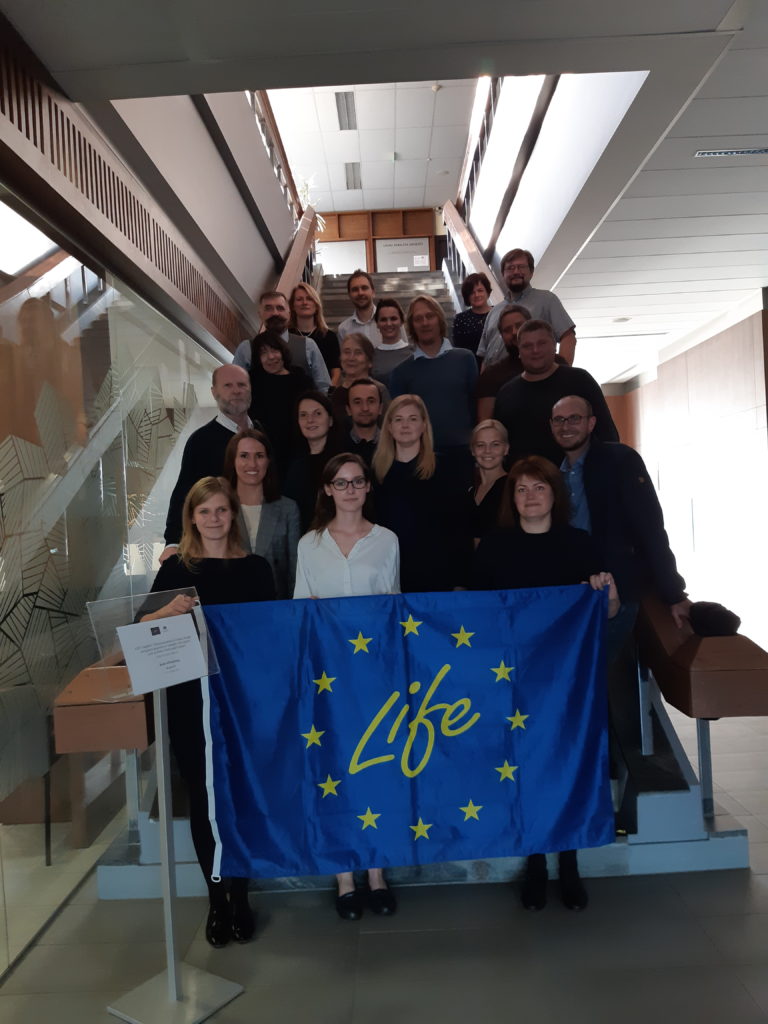An innovative international project has been launched to demonstrate the potential of climate change mitigation in organic soils.
Project “Demonstration of climate change mitigation potential of nutrient rich organic soils in Baltic States and Finland” (LIFE OrgBalt, LIFE18 CCM/LV/001158) has been launched in Baltic States, Finland and Germany with a financial support of European Union LIFE Programme and State Regional Development Agency of the Republic of Latvia.
The objective of LIFE OrgBalt is to demonstrate climate change mitigation potential by managing nutrient rich organic soils on agricultural and forest lands in a Cool Temperate Moist climate zone. Demonstration of management scenarios and impact modelling will be carried out with the aim of reducing greenhouse gas (GHG) emissions from the agriculture, forestry and other land use sector (AFOLU) and contributing to the European Union (hereinafter – EU) common and Member States` national climate targets.
Areas occupied by organic soils (soil with high concentration of organic matter) in the territory of the EU is 34.5 mill. ha, which is 7% of the total EU area. The LIFE OrgBalt project focuses on the most common group of organic soils – nutrient rich drained soils in temperate climate zone with an area of approximately 21 mill. ha or 61% of organic soils in EU countries.
Nutrient rich organic soils is one of the largest sources of GHG emissions from land use, land use change and forestry (hereinafter – LULUCF) sector in boreal and temperate climate zones in Europe. The accuracy of the LULUCF sector’s GHG emissions, CO2 removals and carbon sequestration calculations and the choice of the land use management scenarios are of particular importance in the context of the EU’s vision for climate neutrality, highlighted by the European Commission in a strategic long-term vision 2050 – A Clean Planet for all. Choice of the land use and management model is expected to become an increasingly important part of climate change mitigation efforts in many EU countries.
Given the importance and uniqueness of the sector in providing carbon sequestration, as accurate as possible calculations of GHG emissions of the LULUCF sector will have a significant impact not only at countries` level, but on the EU as a whole. One of the biggest challenges for the sector remains activity data gathering, improved estimation accuracy and modelling of the GHG emission projections and impact of the climate change mitigation measures under different land use and climate change scenarios.
LIFE OrgBalt focuses on exploring and demonstrating the potential of complex GHG emission reduction and carbon sequestration in nutrient rich organic soil management, as well as developing a framework for assessment and implementation of climate change mitigation measures and promoting of scientifically sound approach for land use and climate policy planning documents both in the short and long term perspective.
The LIFE OrgBalt project will run for four years, from 1st of August 2019 to 31st of August 2023. Main project outcomes: (1) improved activity data and GHG inventory methods (GHG emission factors and activity data) used in assessment and projections of GHG emissions and carbon sequestration in relation to the management of nutrient rich organic soils; (2) established demonstration sites, identifying and demonstrating innovative climate change mitigation measures for the management of nutrient rich organic soils in agricultural and forest lands; (3) innovative tools (simulation model for modelling socio-economic and climate impacts of climate change mitigation measures) and proposals for incorporating identified measures into agricultural, forestry and climate policy planning documents.
The project is implemented by eight partners from five EU Member States – Latvia, Lithuania, Estonia, Finland and Germany. The project unites public administration institutions, scientific and non-governmental organisations. Leading partner Latvian State Forest Research Institute “Silava” implements the project in cooperation with the Ministry of Agriculture of the Republic of Latvia, Latvia University of Life Sciences and Technologies, University of Tartu (Estonia), Natural Resources Institute Finland LUKE, Lithuanian Research Centre for Agriculture and Forestry, Michael Succow Foundation (Germany) and Association Baltic Coasts (Latvia).






